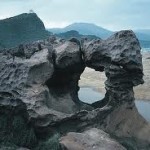City by City Push to Increase Minimum Wage Across the Country
 New York City’s Mayor Bill de Blasio announced that he will push to have the city’s hourly minimum wage jump from $8.75 to $13 by next year.? ?The current minimum wage proposal simply doesn?t do enough to help New York City,? the mayor told the City Council and other assorted city officials during his annual State of the City address on February 3rd. ?That?s why we will fight to raise New York City?s minimum wage to more than $13 per hour in 2016, while indexing the minimum wage, which would bring us to a projected $15 per hour by 2019.?
New York City’s Mayor Bill de Blasio announced that he will push to have the city’s hourly minimum wage jump from $8.75 to $13 by next year.? ?The current minimum wage proposal simply doesn?t do enough to help New York City,? the mayor told the City Council and other assorted city officials during his annual State of the City address on February 3rd. ?That?s why we will fight to raise New York City?s minimum wage to more than $13 per hour in 2016, while indexing the minimum wage, which would bring us to a projected $15 per hour by 2019.?
If Mayor de Blasio were able to successfully get the state legislature to pass his plan, New York City would be the latest in a string of major American cities that have raised their minimum wage. Seattle and San Francisco have passed laws to raise their minimum wages to $15 an hour, Chicago will raise its minimum wage to $13 an hour, and in Washington, D.C., the minimum wage will climb to $11.50 an hour.
Listen here to what’s going on in LA.
Health Department Questions Scientists
Over and over again, it seems to me that the country’s health department is more concerned with protecting businesses, than protecting the public. This time, it’s a story of two geologists combing the wild terrain of southern Nevada, having found worrisome amounts of asbestos in the landscape.? They reached out to experts in the field of asbestos-related diseases who prepared a report.? The Nevada Department of Health, however, chose not to look at their findings and link, to a troubling pattern of high rates of mesothelioma (a cancer often related to asbestos exposure) in the area, as directly connected.? Shortly after, access for these scientists and their team was denied to the state cancer registry, citing their desire to promulgate an alarmist hypothesis. Other scientists watching this unfold are dismayed:? whose ever heard of the state prohibiting scientists from publishing their findings?? “To be aware of that situation in your backyard and not explore it doesn?t make sense from a public health standpoint, ?says Christopher P. Weis, a toxicology adviser to the director of the National Institute of Environmental Health Sciences.? Part of being a good scientist, is being a good neighbor; it’s our civic duty. Unfortunately, we’ve seen a similar responses to other scientists when they question the safety of GMO’s or illnesses caused by Fracking, or vaccinations. We need to question everything, and follow the money!
Is a health department’s real agenda to get essential information to the public, or to not cause a fuss and keep everything under wraps?
An Alternative Way to Store Carbon Dioxide
In a $10 million project called CarbFix, researchers in Iceland are developing a new process to store some of the carbon dioxide emitted by power plants and industries.? When that carbon dioxide is released into the atmosphere, it traps heat, making it the biggest contributor to global warming. So to help stave off the worst impacts of climate change, experts say, billions of tons of CO2 may have to be captured and stored underground.? This is one possible solution to a big, big problem.
In a test that began in 2012, scientists injected hundreds of tons of water and carbon dioxide gas 1,500 feet down into layers of porous basaltic rock, the product of ancient lava flows from nearby Hengill volcano. The experiment tests whether the CO2 will combine with elements in the basalt to become calcite, a solid crystalline mineral . . . will the gas turn to stone?
 In the CarbFix process, the injected water and CO2 mix inside the well, as if it were a giant geological soda machine. The resulting carbonated water, which is acidic, helps break down the rock, releasing calcium and other elements that combine with the carbon and oxygen from the CO2. Mineral carbonation can occur in many kinds of rock, but often it is extremely slow. The CarbFix approach accelerates the process by injecting into basalt, a very reactive rock.
In the CarbFix process, the injected water and CO2 mix inside the well, as if it were a giant geological soda machine. The resulting carbonated water, which is acidic, helps break down the rock, releasing calcium and other elements that combine with the carbon and oxygen from the CO2. Mineral carbonation can occur in many kinds of rock, but often it is extremely slow. The CarbFix approach accelerates the process by injecting into basalt, a very reactive rock.
The detailed analyses of the core samples should conclusively determine if the CarbFix approach works. Already the researchers have a strong indication that their technique is successful. A submersible pump installed at the bottom of a nearby well to monitor the injection process broke down twice. Both times when it was hauled up for repairs it was covered in calcite.


Comments are closed.